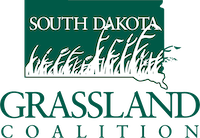I’ve lived in the Great Plains for 30 years and you would think I would be used to the wacky weather we have here in South Dakota. However, each year seems to bring on its own unique challenges. The recent derecho was a new one for me. I’ve never seen wind like that before and such widespread damage. And now we’ve had two of them in one summer!
The turbulent weather was hard on urban areas, where tree and roof damage were high in recent storms, but it was even harder on farmers and ranchers. In order to “weather” the storms, either economic or natural phenomena like a derecho, hail, flood, or drought, farmers and ranchers need to be resilient. One of the tried-and-true ways to be resilient is to maintain diversity in your operation. Such diversity can occur within an enterprise like crop production and by having multiple enterprises like crops, livestock, and hunting.
Diversity within a cropping operation can include a rotation of corn, soybeans, small grains, sunflowers, pulse crops, brassicas, and cover crops. Diversity of multiple operations like crops, livestock, and hunting allows you to ‘stack’ enterprises on top of the same land base. Synergism occurs when we stack enterprises and they interact with each other. For example, grazing livestock like cattle, sheep, and goats need pastures to graze in the summer. In the fall, they can graze crop residues like corn stalks, soybean stubble, or fall cover crops. In the southern Great Plains, winter wheat is commonly grazed in in the winter and early spring and then harvested for grain in the summer. Our growing conditions in South Dakota doesn’t allow us the dual purpose of grazing and harvesting wheat, but we can graze winter annuals like rye or triticale planted after corn in the fall and then grazed the following spring before being sprayed out and planted to soybean. Synergism means that cattle benefit from the cropland by harvesting residual feeds (cheap feed) and the cropland benefits by the cycling of nutrients from cattle grazing (turning residue into manure). It’s a win-win. Stacking enterprises is all about finding the ‘win-wins’.
The great thing about South Dakota is that we have plenty of cropland and grassland. When we desire to run a livestock operation, we need grassland. If we have cropland and grassland we can get synergism “win-wins’ between the two. Because one of South Dakota’s favorite past-times is pheasant hunting, operations who take advantage of providing good habitat (grassland and a mixture of crops) benefit from adding a third enterprise by offering guided hunts. This can also occur with deer hunting.
I know many farmers and ranchers who do this. This third income stream can be very lucrative and can help to even out the cash flow when agricultural prices are low.
Another opportunity to stack enterprises can be through agritourism or nature watching. This is a way to cater to urban people who desire to understand and experience what its like to farm and ranch and see the beauty that many of our rural landscapes offer. This enterprise has to be developed and marketed, but like hunting has great potential to even out the cash flow when income from agriculture is down.
I was able to experience my first prairie grouse mating ritual this spring on native grassland managed in Deuel County. We hiked to our spot before sunrise and set up a blind. Twenty minutes later, on that chilly April morning, we heard and saw close to a dozen male sharp-tailed grouse dancing just feet away from us. This experience was on my bucket-list and it did not disappoint. The fact that we still have native prairie and wildlife doing this ancient mating dance in eastern South Dakota is amazing and is worth protecting. Is it wrong to profit from this “enterprise”? To me farmers and ranchers whether they choose to do so or not are providing important ecological services that often go unnoticed. It takes a lot of work to get up early and set up a blind where you know the grouse will be. So, the answer is yes, I think it is okay to profit from something nature is already providing. It is just another creative way we can stack enterprises and in doing so make a place where crops, livestock, and grass are a great combination.
Source: SDGC Newsletter
